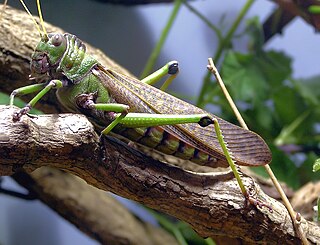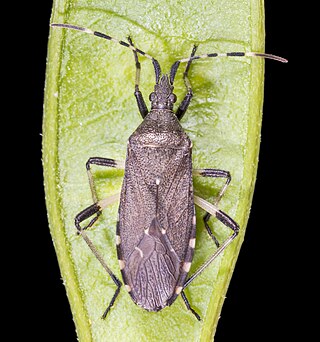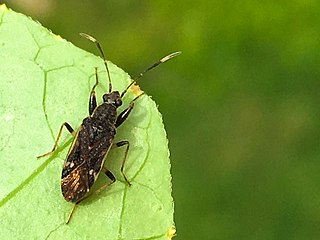
The family Fulgoridae is a large group of hemipteran insects, especially abundant and diverse in the tropics, containing over 125 genera worldwide. They are mostly of moderate to large size, many with a superficial resemblance to Lepidoptera due to their brilliant and varied coloration. Various genera and species are sometimes referred to as lanternflies or lanthorn flies, though they do not emit light.

Nysius is a genus of false chinch bugs in the family Lygaeidae. At least 100 described species are placed in Nysius.

The Romaleidae or lubber grasshoppers are a family of grasshoppers, based on the type genus Romalea. The species in this family can be found in the Americas.

Cicadetta is a genus of generally small-bodied annual cicadas widespread across portions of the Palearctic, Indomalayan, and Afrotropical realms. In older scientific and taxonomic literature, this genus was popularly referred to as Melampsalta. These cicadas occur in a diverse spectrum of habitats, although most taxa are typically associated with weedy meadows and tallgrass prairie ecosystems. Several related species from North America were recently transferred to the genus Cicadettana.

The Blissidae are a family in the Hemiptera, comprising nearly 50 genera and 400 species. The group has often been treated as a subfamily of the Lygaeidae but was resurrected as a full family by Thomas Henry (1997).

Spilostethus is a genus of bugs in the family Lygaeidae. Most species in this genus are from the Palearctic and Oriental regions.

Cymus is a genus of true bugs in the family Cymidae. There are at least 40 described species in Cymus.

Tingini is a tribe of lace bugs in the family Tingidae. There are at least 250 genera and 2,400 described species in Tingini.

Kalama is a genus of lace bugs in the family Tingidae. There are at least 30 described species in Kalama.

Carpocorini is a tribe of stink bugs in the family Pentatomidae. There are more than 100 genera in Carpocorini.

Kleidocerys is a genus of seed bugs in the family Lygaeidae. There are about 17 described species in Kleidocerys.

Sirthenea is a genus of corsairs in the family Reduviidae. There are at least 40 described species in Sirthenea.

Oncopeltus is a genus of seed bugs in the family Lygaeidae, which has at least 40 described species.

Rhyparochromus is a genus of dirt-colored seed bugs in the family Rhyparochromidae. There are more than 40 described species in Rhyparochromus.

Dicranocephalus is the sole genus of true bugs in the family Stenocephalidae. There are about 30 described species in the genus Dicranocephalus.

Melanocoryphus is a genus of seed bugs in the family Lygaeidae. There are about eight described species in Melanocoryphus.

Pachygrontha is a genus of seed bugs and allies in the family Pachygronthidae. There are more than 30 described species in Pachygrontha.

Horridipamera is a genus of dirt-colored seed bugs in the family Rhyparochromidae. There are about 13 described species in Horridipamera.


















